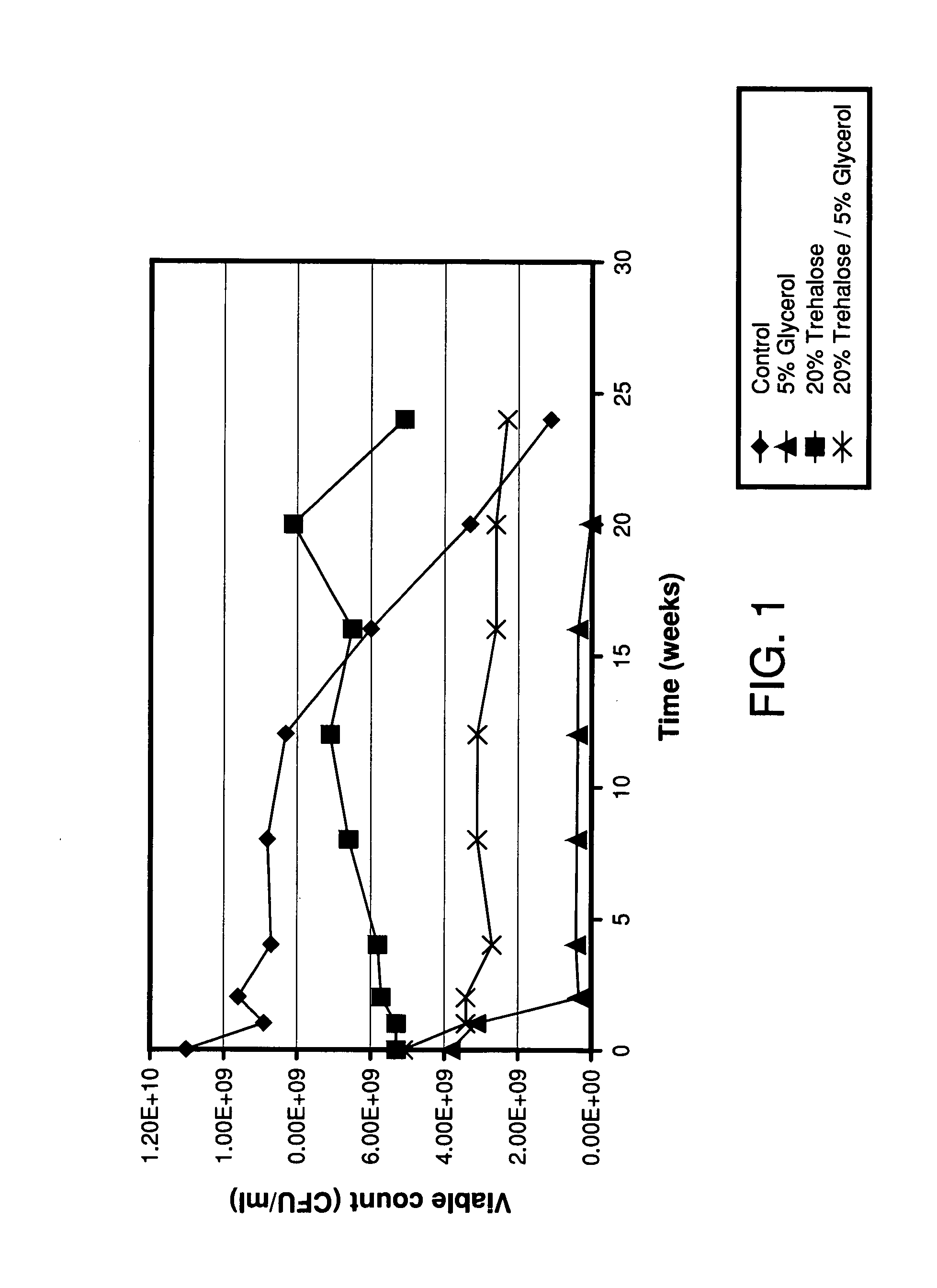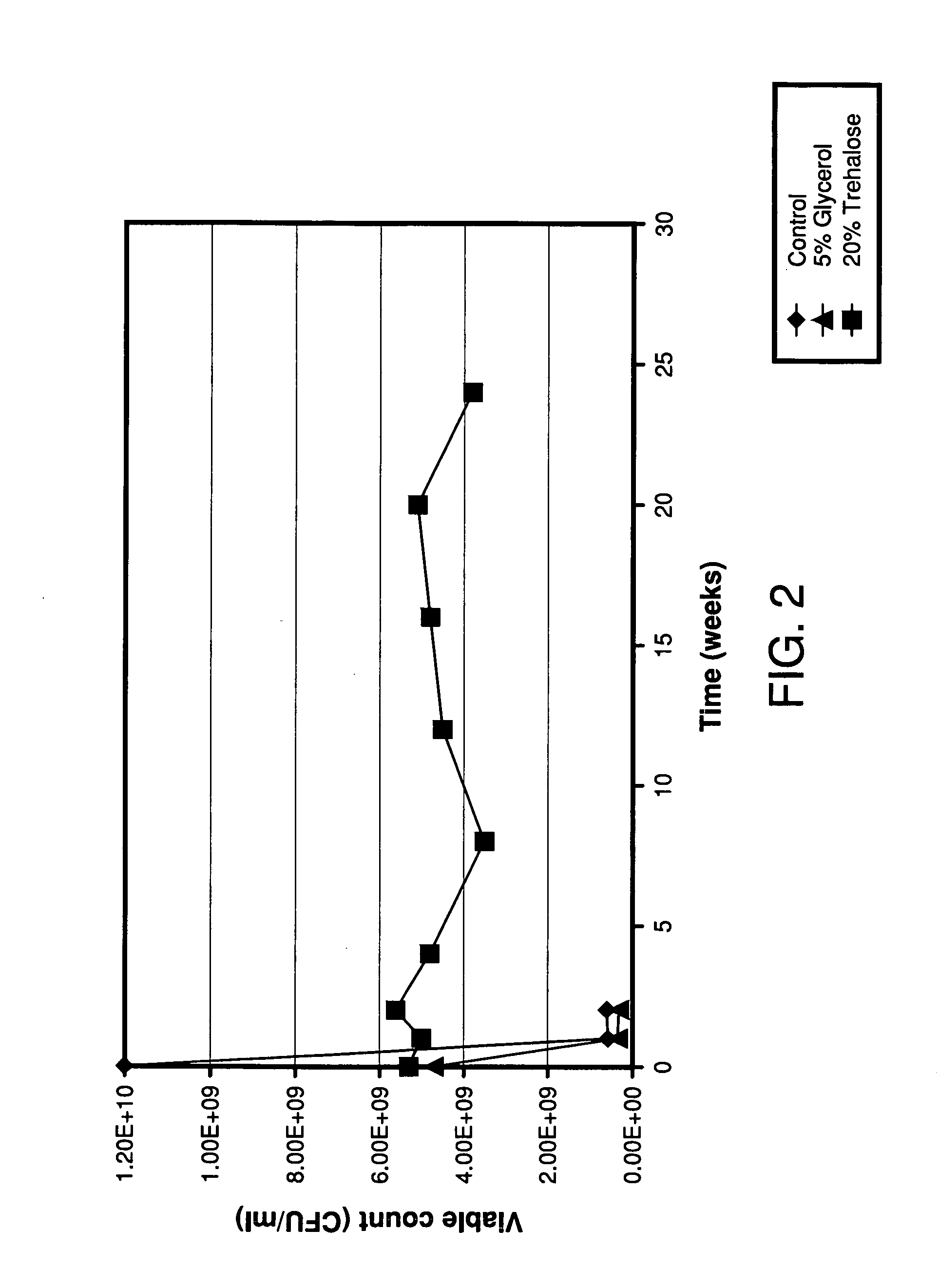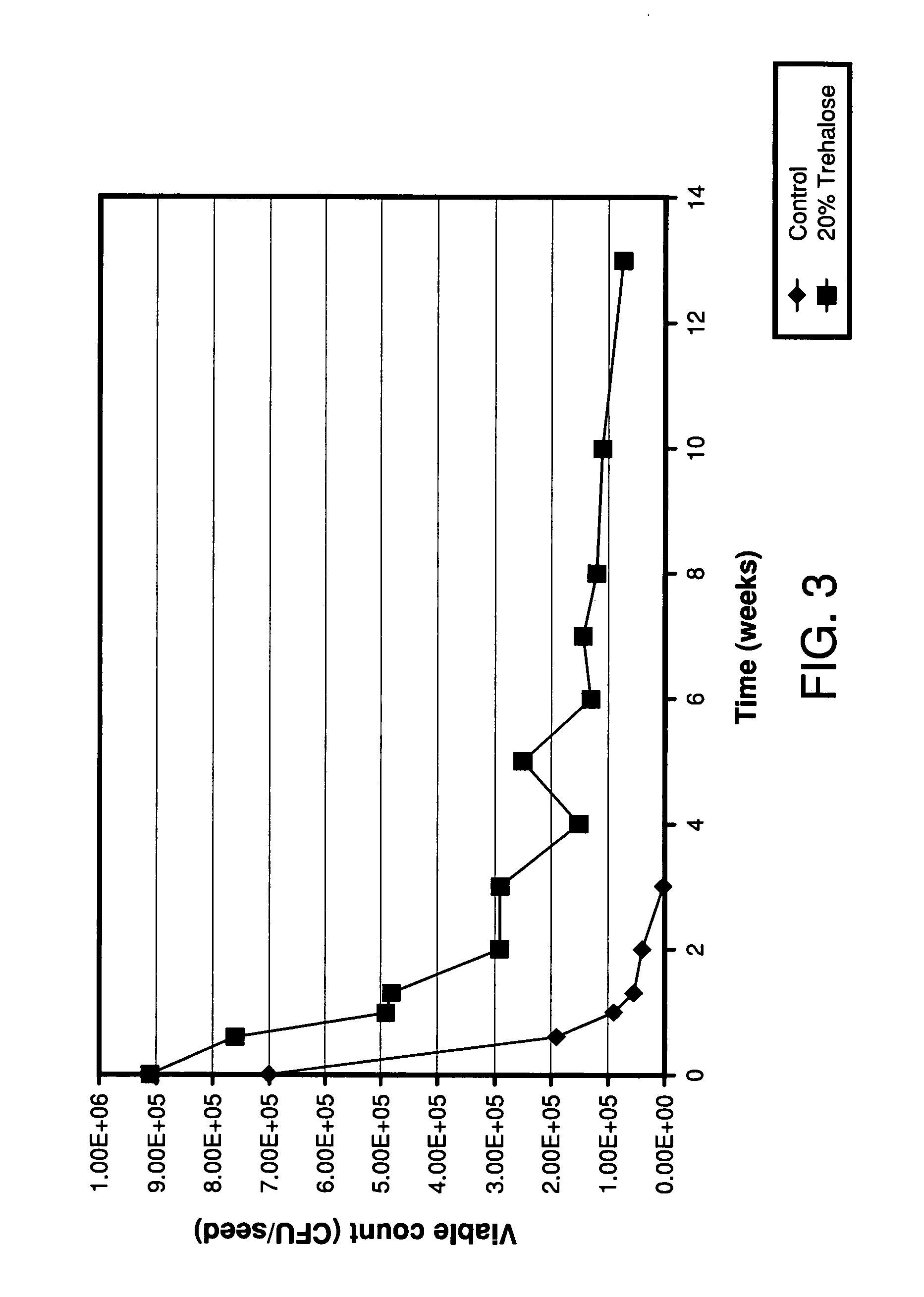Enhanced shelf life and on seed stabilization of liquid bacterium inoculants
a technology shelf life enhancement, which is applied in the field of enhanced shelf life and on seed stabilization of liquid bacterium inoculants, can solve the problems of low survival rate of microorganisms in the inoculant, inability to adapt to the new environment, and inconsistent results
- Summary
- Abstract
- Description
- Claims
- Application Information
AI Technical Summary
Benefits of technology
Problems solved by technology
Method used
Image
Examples
example 1
Evaluation of Stability of Bradyrhizobium Japonicum in the Presence of Trehalose and a Glycerol / Trehalose Mixture
[0066]B japonicum was cultured in shake flasks on a nutrient media for 7 days at 28° C. in a shaking incubator to create a 7 day old mature fermentation broth. Four treatments (see Table 2) were prepared in 250 ml shake flasks. The treatments were prepared in duplicate, so there was a total of 8×250 ml shake flasks. 50 ml of the seven day old mature fermentation broth was added to each of the shake flasks. The contents of all the flasks were allowed to equilibrate in a shaking incubator for an additional 7 days at 28° C. After equilibrium was attained, one flask from each of the treatments was transferred to static incubation at 28° C. The second flask from each of the treatments was transferred to static incubation at 35° C.
[0067]
TABLE 2Treatments - Influence of trehalose and glycerol on stability of BSymbol onTreatmentsWater(g)Glycerol(g)Trehalose(g)FIGS. 1-3Control 0% ...
example 2
Optimization of the Level of Trehalose / Sucrose Required to Stabilize B japonicum
[0079]The procedure followed for the preparation of the flasks was the same as in Example 1. The treatments for this example are given in Table 4.
[0080]
TABLE 4Treatments - Influence of trehalose and sucrose on stability of BjaponicumTreatmentWater(g)Trehalose(g)Sucrose(g)Control50005% trehalose455010% trehalose4010020% trehalose3020030% trehalose2030040% trehalose104005% sucrose450510% sucrose4001020% sucrose3002030% sucrose20030
[0081]The results of the treatments with regard to the survival of B japonicum incubated in a liquid broth at 28° C. are shown in FIG. 4. The results of the treatments with regard to the survival of B japonicum incubated in a liquid broth at 35° C. are shown in FIG. 5.
[0082]The results shown in FIG. 4 indicate that at 28° C., treatments with trehalose concentrations between 10% and 30% weight / volume are optimal for survival of the bacteria in the liquid broth. FIG. 4 also indica...
example 3
Evaluation of Stability of Serratia proteomaculans and Pseudomonas fluorescens in Liquid Broth Formulation
[0086]Serratia proteomaculans (“S proteomaculans”) was cultured in a standard microbiological medium (half strength Tryptic soya broth—“TSB”) for 24 hours at 22° C. to create a bacterial broth. A set of flasks was prepared, with each flask in the set corresponding to one of the treatments listed in Table 5. 50 ml of the bacterial broth was added to each of the flasks. All the flasks were allowed to equilibrate for an additional 3 days in a shaking incubator at 22° C. The flasks were then transferred to static incubation at 28° C. Periodically samples were taken and bacterial numbers were assessed by preparing serial dilutions and plating onto a half strength Tryptic soya agar—“TSA”.
[0087]The same steps were repeated for Pseudomonas fluorescens (“P fluorescens”).
[0088]
TABLE 5Treatments - Influence of trehalose, sucrose, and glycerol on stability ofSproteomaculans and Pfluorescens...
PUM
 Login to View More
Login to View More Abstract
Description
Claims
Application Information
 Login to View More
Login to View More - R&D
- Intellectual Property
- Life Sciences
- Materials
- Tech Scout
- Unparalleled Data Quality
- Higher Quality Content
- 60% Fewer Hallucinations
Browse by: Latest US Patents, China's latest patents, Technical Efficacy Thesaurus, Application Domain, Technology Topic, Popular Technical Reports.
© 2025 PatSnap. All rights reserved.Legal|Privacy policy|Modern Slavery Act Transparency Statement|Sitemap|About US| Contact US: help@patsnap.com



